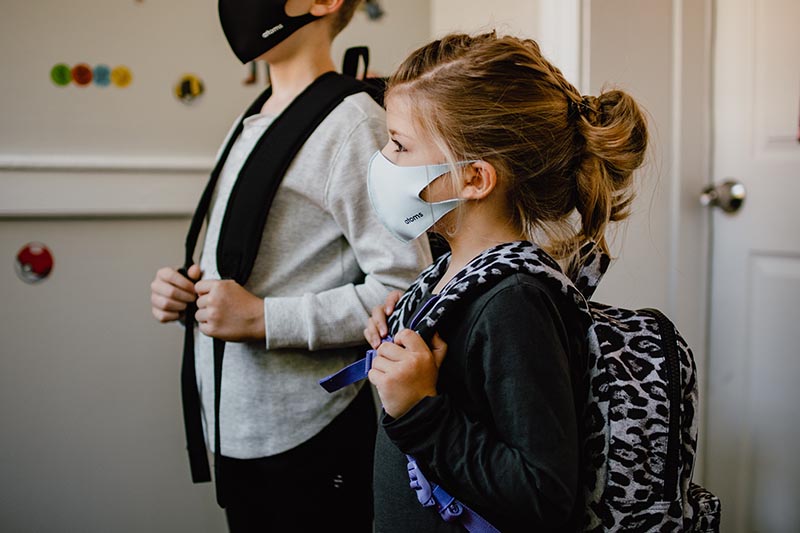
The pandemic finally winds down in our country with vaccinations rising and case rates dropping. The majority of public and private schools have announced that they will be returning to partial or fully in-person instruction for the 2021-2022 school year. However, many parents are disappointed with their children’s academic performance after a year of remote learning. Unsurprisingly, recent students that come in for a free assessment at Math Genie are on average two academic years behind in both math and reading based on grade level.
A recent opinion piece in the New York Times written by a 4th-grade charter school teacher and mother illustrates this widely felt sentiment among parents of young children in our nation. In her op-ed, Ms. Almagor describes feeling “bewildered” and “horrified” at the decision of state governments to make schools “inessential” by moving all classes online.
Failures Across the US
During the past year, local reports on student performance have painted a grim picture. Michigan saw twice the number of failing grades in the fall 2020 semester compared to the fall of 2019. In Fairfax County, Virginia, the number of “F’s” increased 83% in the same time period. The Austin, Texas school district reported a 70% increase in the number of failing students.
These cases may be more extreme compared to the downward trend of student performance over the past year on a national level, but they are by no means isolated anomalies.
What Do The Studies Say?
In December 2020, a study released by McKinsey & Co. estimated that students last spring were set back anywhere from one to five months in mathematics. That same study estimated that by now, with the school year coming to a close, students were likely to lose five to nine months of mathematics. In addition to that, students of color would fall six to twelve months behind.
Online Struggles Wasting Class Time
Many public schools were extremely slow to adapt to the remote learning situation. A very familiar situation for many parents of young children, Liesl Hickey describes in USA Today how “figuring out how to operate the technology” dominated the instruction of her third-grade daughter. Her kid spent “long frustrating stretches trying to figure out how to layout a document or submit her work.”
Also contributing to last year’s academic setback was that many students had parents who were essential workers, and could not afford the time to help their children if they were struggling. When Lelac Almagor was teaching her fourth-grade Zoom class, she “had students calling in from the car while their mom delivered groceries, or from the toddler room of their mom’s busy daycare center.”
Math Genie Students Are Better
Despite the backslide of students’ academic, social, and emotional progress in the past year, the blame lies not with remote learning, but with its implementation. In fact, remote learning can and does work, as we have proven at Math Genie with our use of innovative educational technology that is easy to use for both students and their teachers.
While public school teachers and students struggled for months to communicate over Zoom, and complete assignments using applications that were not user-friendly, Math Genie adapted immediately and its students have generally fared better.
Fast & Nimble
When NJ Governor Phil Murphy announced the lockdown on March 16th, thanks to Math Genie’s sophisticated technology, we were fully remote by the following Monday. Our internal scheduling and lesson planning software allowed us to move our classes fully remotely in 2-3 days flat.
During the lockdown, we promptly upgraded our HVAC systems to have a UVC filter. All desks have plexiglass, and our students and staff are still required to wear masks, with mandatory temperature checks at entry. Many schools are still behind on these basic measures.
We were able to secure face masks in April 2020 and shipped them to all of our customers in April 2020, a time when even doctors didn't have masks. We donated masks and face shields to hospitals and the medical professionals working there, many of whom have children attending Math Genie classes.
We understand how important it is to have small class sizes to facilitate a better environment for learning. According to a Brookings Institute report, very large class-size reductions, on the order of magnitude of 7-10 fewer students per class, can have significant long-term effects on student achievement and other meaningful outcomes. That is why at Math Genie, our classes range from 3 to 5 students per teacher, fostering a strong relationship between the teacher and students and a healthy learning environment.
As a result of our efforts in upgrading our technology, reducing classroom sizes, and offering both in-person and online instruction, our students have been able to academically excel throughout the entire pandemic. Math Genie continues to prove that remote instruction can indeed work exceptionally well when used correctly.
Schedule your free assessment today to discover if your child has fallen victim to the Covid Slide.
New York Times
Washington Post





